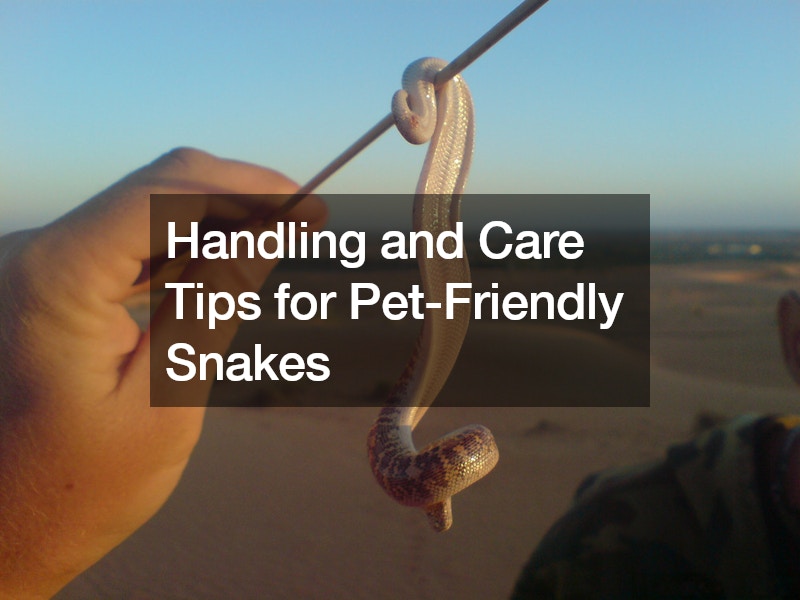Introduction to Responsible Pet-Ownership
When it comes to choosing a pet, snakes are a fascinating and unique option. Pet friendly snakes, such as corn snakes, ball pythons, and king snakes, offer an intriguing mix of low-maintenance care and captivating behavior. These reptiles can be an excellent addition to any household, provided their needs are properly met. The key to successful snake ownership lies in understanding their specific requirements and ensuring their environment is both safe and stimulating. By following best practices for handling and care, you can create a nurturing habitat where your snake can thrive and display its natural behaviors.
One of the most appealing aspects of pet friendly snakes is their relatively low maintenance compared to more traditional pets. They do not require daily walks, and their feeding schedule is less frequent. However, this does not mean that they do not require significant attention and care. Ensuring your snake is healthy and happy involves a combination of proper habitat setup, appropriate feeding, and regular health checks.

Understanding Snake Behavior and Temperament
Understanding the behavior and temperament of pet friendly snakes is crucial for providing the best care possible. Snakes are generally solitary creatures, and their behaviors are often dictated by their instincts. Observing your snake’s body language can give you significant insights into its well-being and comfort levels. Common behaviors include basking, hiding, and exploring their enclosure. Knowing what is typical for your snake can help you spot any signs of stress or illness early on. It’s important to remember that each snake has its personality and getting to know your pet takes time and patience.
Pet friendly snakes like corn snakes and ball pythons are known for their generally docile nature, making them suitable for handling. However, they can still display signs of discomfort if not handled correctly. Bulk wood shavings are often used in their enclosures to provide a comfortable and natural substrate that allows them to burrow and feel secure. When interacting with your snake, move slowly and avoid sudden movements to prevent startling them. Over time, as your snake becomes accustomed to your presence and handling, you will build a trusting relationship that makes care and handling easier and more enjoyable for both of you.
Preparing the Ideal Habitat for Your Snake
Creating the ideal habitat for pet friendly snakes is a fundamental aspect of their care. The enclosure must replicate the snake’s natural environment to promote their well-being. This includes providing appropriate heating, humidity, and hiding spots. Snakes are ectothermic, meaning they rely on external heat sources to regulate their body temperature. Therefore, setting up a temperature gradient within the enclosure is essential. One side should be warmer, around 85-90°F, while the cooler side should be between 75-80°F. This allows the snake to move between areas to regulate its body temperature as needed.
When setting up the habitat, sourcing materials from a farm supply store can be beneficial. Items such as water bowls, hides, and climbing branches can often be found there. It’s also important to use a substrate that suits your snake’s natural behaviors. For instance, aspen shavings or reptile carpets can be used depending on the species. Additionally, ensure the enclosure is secure to prevent escapes and is cleaned regularly to maintain a healthy environment. Proper habitat setup not only keeps your snake healthy but also enriches its life by providing opportunities for natural behaviors such as climbing, burrowing, and exploring.

Feeding Your Snake: Best Practices and Tips
Feeding pet friendly snakes requires an understanding of their dietary needs and preferences. Snakes are carnivorous, and their diet primarily consists of appropriately sized rodents. The frequency and size of feedings depend on the age, size, and species of the snake. Younger snakes typically require more frequent feedings, about once a week, while adult snakes can often be fed every 10 to 14 days. Providing your snake with the proper nutrition is essential for their health and growth. It’s important to research the specific dietary needs of your snake species to ensure they receive balanced nutrition.
For instance, using wall insulation in your home can help maintain the necessary temperatures in the snake’s enclosure, ensuring they properly digest their meals. When feeding your snake, it is recommended to use pre-killed prey to avoid injuries to the snake from live rodents. Thaw frozen prey thoroughly and ensure it is at room temperature before offering it to your snake. Always supervise feedings to monitor your snake’s behavior and health. Regular feeding not only ensures your snake’s physical well-being but also provides mental stimulation as they engage in their natural hunting behaviors.
Safe Handling Techniques for Pet Snakes
Handling pet friendly snakes safely requires patience, gentleness, and an understanding of their body language. Snakes can be sensitive to sudden movements and rough handling, which can cause stress or defensive behavior. To handle a snake, approach it calmly and support its body fully, allowing it to move through your hands naturally. Avoid restraining the snake’s head or applying too much pressure to its body. Regular handling can help build trust between you and your snake, making it more comfortable with human interaction over time.
Integrating the keyword ” affordable roofing” into the topic, consider that just like a well-maintained roof provides shelter and safety for your home, proper handling techniques offer a sense of security for your snake. When you provide a secure and gentle environment during handling, your snake is more likely to remain calm and cooperative. Always wash your hands before and after handling to prevent the spread of bacteria and ensure that you do not carry any scents that could alarm or confuse your snake.

Recognizing Signs of Stress in Snakes
Recognizing signs of stress in pet friendly snakes is crucial for maintaining their health and well-being. Stress in snakes can be caused by various factors, including improper handling, inadequate habitat conditions, or illness. Common signs of stress include refusal to eat, excessive hiding, frequent attempts to escape the enclosure, and unusual aggression or defensiveness. If your snake displays any of these behaviors, it is essential to evaluate their environment and care routine to identify and address potential stressors.
For example, consulting a local plumber to fix any leaks or humidity issues in your home can prevent fluctuations in the snake’s habitat conditions, which might otherwise cause stress. Ensuring that your snake’s enclosure has the right temperature, humidity, and hiding spots can significantly reduce their stress levels. Regular health checks and monitoring of your snake’s behavior will help you catch any issues early and make necessary adjustments to their care.

Cleaning and Maintaining Your Snake’s Enclosure
Keeping the enclosure clean and well-maintained is vital for the health and comfort of pet friendly snakes. A dirty or poorly maintained habitat can lead to health issues such as respiratory infections and skin problems. Regular cleaning involves spot-cleaning the enclosure to remove waste and uneaten food, as well as deep cleaning the entire setup periodically. During deep cleaning, replace the substrate, disinfect all surfaces, and clean any accessories such as water bowls and hides. Maintaining a clean environment reduces the risk of bacterial and fungal growth, ensuring your snake stays healthy.
Incorporating the keyword roofer, consider that just as a roofer ensures the structural integrity and safety of a home, proper maintenance of your snake’s enclosure provides a secure and healthy living space for your pet. Regular maintenance includes checking the enclosure for any damage or wear and tear that could pose a risk to your snake. Ensure that heating elements and other equipment are functioning correctly to provide a stable environment.
Common Health Issues and Prevention
Understanding common health issues in pet friendly snakes and their prevention is essential for responsible snake ownership. Snakes can suffer from various ailments, including respiratory infections, mites, and skin conditions. Respiratory infections often result from incorrect humidity and temperature levels, while mites can infest the enclosure if it is not kept clean. Symptoms of illness include lethargy, wheezing, lack of appetite, and visible parasites. Regular health checks and prompt veterinary attention are crucial for catching and treating health issues early.
Using pest control services can help prevent mite infestations in your snake’s environment. Maintaining optimal habitat conditions, such as proper humidity and temperature, also plays a critical role in preventing respiratory infections. Quarantining new snakes before introducing them to your existing collection can prevent the spread of illnesses and parasites. A well-maintained and clean enclosure, combined with attentive care, can significantly reduce the risk of health issues in your pet-friendly snake.
Providing Enrichment and Stimulation for Snakes
Providing enrichment and stimulation is important for the mental and physical health of pet friendly snakes. While snakes do not require constant interaction like some other pets, they still benefit from an engaging environment. Enrichment can include a variety of hides, climbing branches, and different textures in their enclosure. Changing the layout of the enclosure periodically can also stimulate their natural curiosity and exploratory behavior. Enrichment helps prevent boredom and encourages natural behaviors such as climbing, burrowing, and hunting.
The keyword toddler care can be related to how providing enrichment for your snake is similar to creating a stimulating and safe environment for toddlers. Just as toddlers need activities and a safe space to explore and develop, pet friendly snakes benefit from an enriched habitat that promotes their well-being. Simple additions like tunnels, rocks, and different substrates can make a significant difference in your snake’s quality of life.
Seasonal Care Tips for Pet Snakes
Seasonal changes can significantly impact the care requirements for pet friendly snakes. As temperatures fluctuate throughout the year, it’s important to adjust the environment within the enclosure to ensure your snake remains healthy and comfortable. During colder months, you may need to increase the heat sources or add additional insulation to maintain the proper temperature gradient. Conversely, in warmer months, it’s crucial to ensure that the enclosure does not overheat, which might require adjusting the placement of heat lamps or using cooling elements.
For example, when installing window treatments, a blinds installer can help regulate the natural light and temperature entering your home, which in turn affects your snake’s enclosure. Proper seasonal adjustments are essential to prevent stress and health issues caused by temperature extremes. Monitoring and adapting to seasonal changes will help maintain a stable environment for your pet-friendly snake, ensuring they remain active and healthy year-round.
Emergency Care and First Aid for Snakes
Knowing how to handle emergencies and provide first aid is a crucial aspect of caring for pet friendly snakes. Emergencies can range from injuries and sudden illnesses to escaping from the enclosure. It’s important to have a basic first aid kit on hand that includes items like antiseptic, tweezers, and sterile gauze. Additionally, being familiar with the signs of common health issues can help you act quickly in case of an emergency. For example, if your snake shows signs of a respiratory infection, such as wheezing or mucus around the nose and mouth, immediate veterinary attention is necessary.
Incorporating the keyword mobile groomers, think of emergency care for snakes similarly to having mobile groomers on call for pets – it’s about being prepared and responsive. Having contact information for a reptile veterinarian and knowing the location of the nearest veterinary clinic that treats snakes can be life-saving. In case of an escape, knowing how to safely recapture your snake without causing it stress or injury is vital.
Responsible Snake Owner
Caring for pet friendly snakes involves a blend of knowledge, preparation, and attentiveness. From understanding their behavior and creating an ideal habitat to recognizing signs of stress and health issues, each aspect of snake care is crucial for ensuring their well-being. By providing a clean and stimulating environment, proper nutrition, and seasonal adjustments, you can create a thriving habitat for your snake. Additionally, being prepared for emergencies and understanding basic first aid can prevent minor issues from becoming serious health problems.
Pet friendly snakes, such as corn snakes and ball pythons, can be rewarding pets when their specific needs are met. They offer a unique pet ownership experience, requiring a different set of skills and knowledge compared to more traditional pets. However, with the right care and attention, these reptiles can live long, healthy lives, providing their owners with years of fascination and enjoyment.







